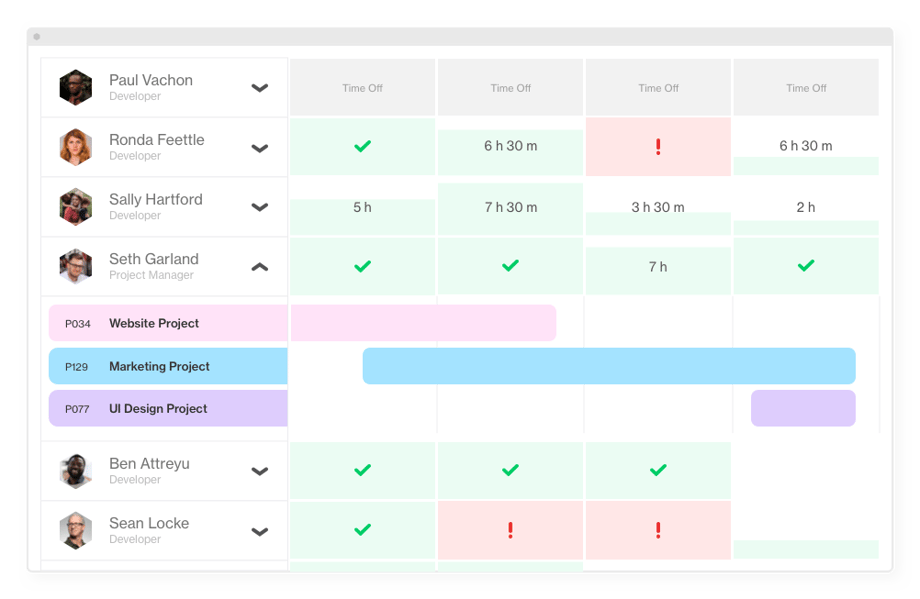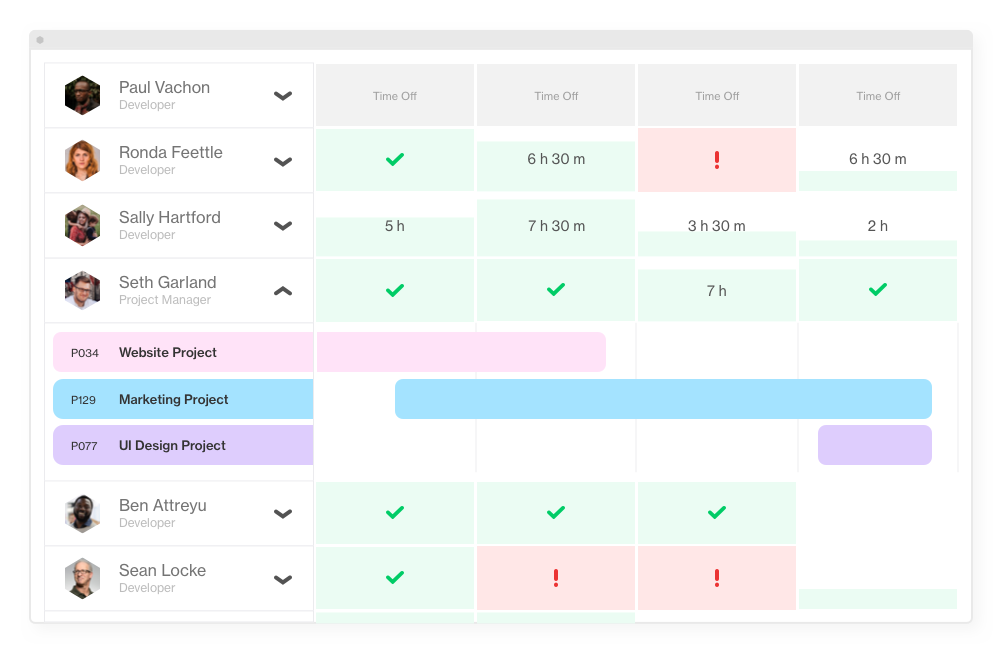Getting to Know Your Resource Availability: A Tactical Guide

Resource availability is a term that you've probably heard thrown around quite often if you work in project management, and for a good reason. Availability of resources is a key factor in planning and managing projects. But despite the importance, many project managers are still struggling to get it right. So in this short guide, we’ll lay out everything there is to know about resource availability.
What is resource availability?
First things first, resource availability refers to the information you have about what resources you're able to use, when, and under what conditions. In project management, “resource” is a way to speak for a person (referring to human resource management), but it can also stand for material objects and facilities, depending on which industry you’re in.
In that vein, at least for professional services businesses, getting to know your resource availability means seeing each employee’s allocations today or days, weeks, and months in advance, combined with the gaps when their time is not occupied. If resources are available, their time is considered free to use during the duration of your project. That’s why a typical resource availability matrix will contain everyone’s workload, plus vacations and time off.

Forecast.app's resource schedule
The benefits of understanding resource availability
Knowing the availability of your resources helps you make intelligent resource allocation decisions, carry out feasibility studies, and simply get more returns from your operations. But that’s only half of the story. Resource availability also makes it easier to decide whether there’s room for new projects or not. Fully booked resources serve as a sign that there’s time to hire new people.
Additionally, a clear resource availability picture is your answer to whether it’s possible to meet the changing requirements and add something to the project scope or not. Change is inevitable, so having an overview of where people can squeeze something in is essential.
At the same time, understanding your resource availability can help project managers within the same organization put an end to different resource conflicts. Let’s not forget that many projects are not successful due to resource conflicts. Businesses that fail to understand their own resource pool hence get into trouble.
Another great thing about knowing resource availability is that you can balance the workloads and space out tasks in a way that doesn’t make certain people overwork or sit idle. It’s a well-known fact that 20% of the team are delivering 80% of the work, and the first step to turning this ship around is tracking resource workloads properly.

Forecast.app's resource schedule filters for better resource management
How to track resource availability in project management
The benefits of understanding everyone’s availability are clear. By monitoring your resources, you can plan your actions more efficiently on both project and company-wide level. But the question remains: how do you track resource availability? Theory aside, here are some steps you can take to get the needed transparency.
1. Match resources to projects in one central location
Now, this might sound trivial, but the understanding of your resource availability starts with the visibility into your entire resource pool - specifically, who is doing what and when. This means that resources should be connected to projects and vice versa, so here’s the first best practice on your way to getting to know your resource availability: Match resources to projects in one central location.
You don’t want resources, projects, and tasks scattered in different places, or worse, spreadsheets. Then it becomes difficult to discern who’s working on what.
There are two ways to allocate resources for better visibility. You can either allocate them to tasks or projects. Task allocations require a lot of manual work, but will fit you well if the type of work is predictable enough to plan ahead. In turn, project allocations will suit companies that prefer the agile way of working.
However, allocating people to tasks and tracking their workloads doesn’t operate on a typical Google calendar (e.g., monthly or weekly) and, therefore, it requires a different approach to task tracking than most people commonly use. Here are some resource management tools of the highest caliber that cater to this need.
2. Build a resource schedule
In Forecast, we’ve built a Resource Schedule that connects with your projects and tasks to provide the full picture of your entire agency’s resource allocations. It gives you one thing agencies need badly - visibility into their team’s planned and current workloads.
To build a resource schedule, you need to estimate your tasks and projects, as well as set start and end dates. Getting in the habit of always estimating your tasks and setting deadlines pays off in a realistic resource schedule.
A realistic resource schedule means you’ve actually counted the days you have available to do something, added up all of your deadlines, and then estimated how many tasks you can accomplish during that time frame. This is a very workable approach that ensures the planner gets close to the highest quality of productivity possible in almost any business situation.
3. Visualize non-project time
Every resource schedule needs to count in your resource’s internal time, such as vacation and time off for a better understanding of when your team will be away. Not accounting for this time can lead to over-committing resources leading to less available time or even stress which is never a good thing.
If you want to improve operational efficiency, you have to master the art of resource availability. Why? It's simple: it will allow you to better identify an appropriate timeline for your project and will help you avoid conflicts in the frequent situation when two or more committed tasks require the same resource at the same time.
To get an overview of how your resource pool connects with projects and tasks and track everyone’s availability, try planning a project in Forecast.
You might like to read these articles on our blog..
Subscribe to the Forecast Newsletter
Get a monthly roundup of productivity tips & hacks delivered straight to your inbox
